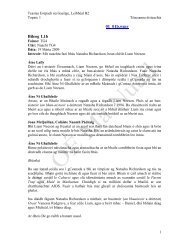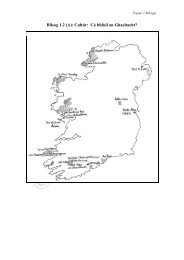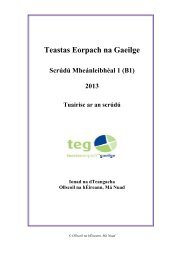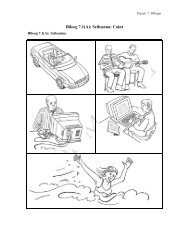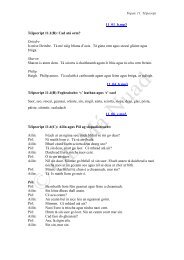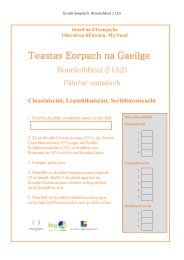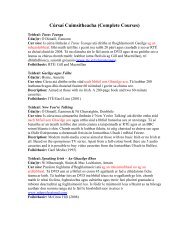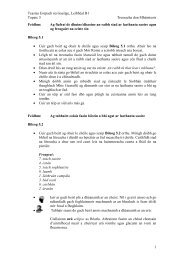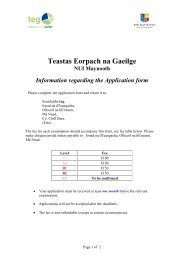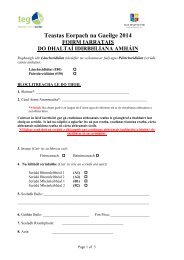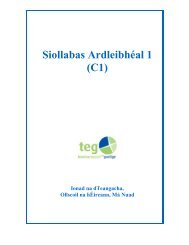Create successful ePaper yourself
Turn your PDF publications into a flip-book with our unique Google optimized e-Paper software.
Syllabus A2<br />
• There should be a continuous focus on various aspects of language awareness<br />
during the teaching process. Suitable texts, including written, aural, and visual<br />
texts, can be used to motivate the learner to reflect on these matters. The<br />
purpose of this approach is to assist the language acquisition process by giving<br />
the learner opportunities to identify areas of weakness in his/her information<br />
base, particularly when speaking.<br />
Outlined below are some examples of areas upon which the learner should focus:<br />
• Grammatical terminology<br />
It is important that the learner should be aware of grammatical terminology in<br />
Irish in order that he/she have the necessary skills to analyse the language<br />
grammatically and to make the best use of dictionaries and other reference<br />
materials correctly.<br />
• Syntax<br />
The learner should be able to differentiate between syntax in Irish and in<br />
English. Observe the examples below:<br />
She comes from Cork. Is as Corcaigh í.<br />
Do you like music? Yes. An maith leat ceol? Is maith.<br />
• Emphasis/stress<br />
The learner should recognise how emphasis in a sentence is different in Irish<br />
compared to English. For example:<br />
Bríd: Is maith liom ceol. An maith leatsa ceol?<br />
It is a common mistake in Irish to vocally stress the word ‘leat’, as in the case of<br />
English where the word you (emphatic) is stressed. In Irish, however, the suffix<br />
‘sa’ is added to the prepositional pronoun ‘leat’ for the purpose of emphasis.<br />
• Awareness of pattern<br />
The learner should seek to identify patterns in Irish grammar. By using suitable<br />
texts, one could ask the learner to be attentive to the different grammatical<br />
patterns that may be evident - for example, what happens after the interrogative<br />
forms in the present and past tenses, what changes occur when an adjective is<br />
put with a noun and so forth.<br />
• Register<br />
It is important that the learner be able to identify different contexts that require<br />
a specific register. For example, are there differences in the kind of Irish used<br />
in formal contexts and in informal contexts? Does one greet a person in Irish in<br />
the same way in which one greets someone in other languages?<br />
• Dialects<br />
The learner can be helped to understand the variations that exist between the<br />
dialects. This can be achieved by highlighting the range of expression that<br />
endures in the different dialects. For example, to recognize the main<br />
differences in phrases between the dialects, for example, ‘ní mór dom’ and<br />
© National University of Ireland, Maynooth 8



